Chile’s Benjamín Subercaseaux famously described his country’s territory as “a crazy geography,” just as British author Sarah Wheeler recounted her experiences there in Travels in a Thin Country between the Pacific Ocean and the high Andes. For much of the country’s history, travel has been a unidirectional venture, with few alternatives by sea, train or road — rather different from Argentina, where there’ve been multiple routes suitable for road trips.
This occurred to me late last year, when a New York reader wrote me about an upcoming literary trip to Chile — his book club takes it on the road — and asked for recommendations for a trip between Puerto Varas and Pucón that would avoid the motorway Ruta 5, the quickest (but least interesting) route between the two resorts.
Not so long ago, that would have more difficult. But, in recent years, the Chilean government has linked and improved a series of parallel easterly roads that provide a more scenic alternative along the lakes of the Andean front range. The Ruta Interlagos stretches from the town of Inspector Fernández, north of Temuco, south to the village of Puelo, southeast of Puerto Montt.
I recommended an itinerary to my client and, when I returned to Chile a couple of months later, I decided to follow the route (more or less) myself. It bears mentioning that the Interlagos is not a single highway, but a network of interconnected roads that pass through smaller towns and villages, not all of which are resorts, so there are multiple options.
My client started in Puerto Varas and so did I, spending a couple of nights in the new designer Hotel Awa, a multi-storey concrete, glass and girder structure on the city’s eastern outskirts. With views over Lago Llanquihue to Volcán Osorno’s perfect cone, it’s the area’s most technologically sophisticated hotel, but with rustic touches, such as hiding the TV in an old steamer trunk at the foot of the bed. At night, I dined on truffled pork loin, complemented by a barley-based risotto from its own vegetable garden and garnished with a hazelnut sauce.
TWO WAYS NORTH
From Llanquihue’s south shore, there are two ways north, on the west side via Frutillar or the longer east side route via Ensenada. I chose the longer route, which offers a detour up to the volcano’s ski area, which is open for hikers in summer, and then proceeded to picturesque Puerto Octay, a small north shore town with a metalclad church and turreted houses that evoke Mitteleuropa. On Octay’s outskirts, my choice for the night is Hostal Zapato Amarillo, a Swiss-Chilean B&B with sod-roofed cabins and personalised attention.
For my client, however, I recommended a small detour to Hotel Termas de Puyehue, a classic grand hotel at Parque Nacional Puyehue, about an hour north of Octay on the highway that runs from Villa La Angostura to Osorno. For arrivals from Argentina, this sprawling hot springs hotel, with nearby hiking trails, makes an ideal overnight or multi-day stay in what may be Chile’s closest analogue to Bariloche’s Hotel Llao Llao. Along this highway, there’s still abundant evidence of the 2012 Puyehue-Cordón Caulle eruption that buried much of the area in ash.
I didn’t stay at the Puyehue this time, instead heading north through the town of Entre Lagos toward Lago Ranco, a lesser visited destination that’s in the heart of Mapuche country. Along this segment, the signs declare that this is “Norpatagonia,” and, on a gravel surface with signs of improvement, the potholes were still muddy. As I approached the south shore town of Lago Ranco, I could spot Isla Huapi, an offshore island inhabited almost exclusively by Mapuches.
Here, in an area far more popular with Chileans than foreigners, I stopped for a sandwich before continuing east along a smooth paved road with plenty of scenic overlooks. The last time I had visited, a cable barge was the only means of crossing the Río Nilahue, but now modern bridges ease the route around the densely forested east side to the north shore town of Futrono. Here, almost opposite San Martín de los Andes, I spent the night at the Cabañas Nórdicas, a cluster of seemingly Scandinavian structures on a bluff overlooking the lake.
BIT BETTER TROD
North of Futrono, the route’s a bit better trod, approaching the motorway town of Los Lagos before veering northeast to Panguipulli, the entry point to a “Siete Lagos” route that resembles Argentina’s in Río Negro and Neuquén. Panguipulli fancies itself the “Ciudad de las Rosas” for its gardens at the east end of its namesake lake, but the area’s top attraction is its hot springs resorts. My client raved about the Termas Geométricas — an isolated Zen-like canyon of waterfalls, creeks and naturally heated pools linked by boardwalks near Coñaripe that’s open for day trips only — in the shadow of the fuming Volcán Villarrica.
After a leisurely day at the Termas Geométricas, nearby accommodation options include the Termas de Coñaripe — a hot springs hotel in its own right — and the town of Lican Ray, with its black sand beaches at Lago Calafquén. Termas Geométricas, though, gets many day-trippers from Pucón, the uber-resort city that’s just over the hill at the east end of Lago Villarrica. There, the place to stay is the hillside Hotel Antumalal, a Bauhaus-style masterpiece that, arguably, paved the way for Varas’s Awa.
Still, there are many cheaper but still outstanding options here, and great hiking in spots like Parque Nacional Villarrica, Parque Nacional Huerquehue, and the Santuario Cañi, a private conservation effort aimed at protecting the area’s Araucaria forests.
For visitors from Argentina, it’s easy to return by the Paso Mamuil Malal to Junín de los Andes and thence to Buenos Aires or back to Bariloche. The road goes on forever.
WHERE TO STAY AND VISIT
– Hotel Awa Ruta (225 Km 27, tel. 56-65- 2292020, www.hotelawa.cl), about 15 east of Puerto Varas on the road to Ensenada, is a contemporary design hotel on the Llanquihue lakeshore (pictured to the left, above). Overnighters are welcome, but it also offers packages and its own tours.
– Museo Colonial Alemán (Avenida Vicente Pérez Rosales s/n, Frutillar, tel. 56-65- 2421142, www.museoaustral.cl) is a hillside architectural and historical museum about half an hour north of Puerto Varas, well worth a detour in its own right.
– Hostal Zapato Amarillo (Ruta U-55 Km 2.5, La Gruta, Puerto Octay, tel. 56-64- 2210787, www.zapatoamarillo.cl) is an architecturally distinctive Swiss-Chilean guesthouse with dispersed garden rooms, excellent breakfasts (included), and fine optional dinners. Tours and rental scooters are available.
– Hotel Termas Puyehue Wellness & Spa Resort (Ruta 215 Km 76, Puyehue, tel. 56-22-2936000, www.termaspuyehue.cl) is the classic Chilean lakes district hotel, but it’s not living on reputation — everything within has been modernised and upgraded, without sacrificing charm and tradition.
– Cabañas Nórdicas (Gastón Guarda s/n, Futrono, tel. 56-9-64955008, www.cabanasnordicasfutrono.cl) offers spacious and stylish accommodations overlooking the north shore of Lago Ranco, with easy (but steep) beach access. Easy walking distance to downtown restaurants.
– At Termas Geométricas (Coñaripe, tel. 56-9-95359843, www.termasgeometricas. cl), colourful boardwalks snake up a canyon of creeks and waterfalls with multiple hot springs pools for soaking (pictured to the left, below). There is a café, but no accommodations at the springs themselves.
– Hotel Antumalal (Camino Pucón a Villarrica Km 2, tel. 56-45-2441011, www.antumalal.com) has become a Chilean classic. Service is personalised — on the door of the room appears not a number, but your name.







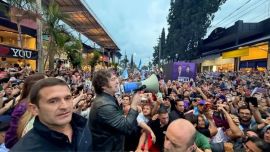












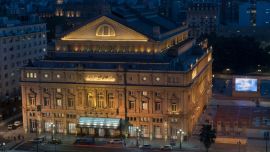
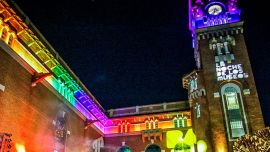
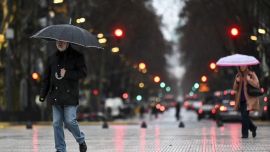
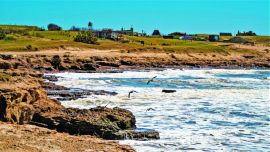

Comments